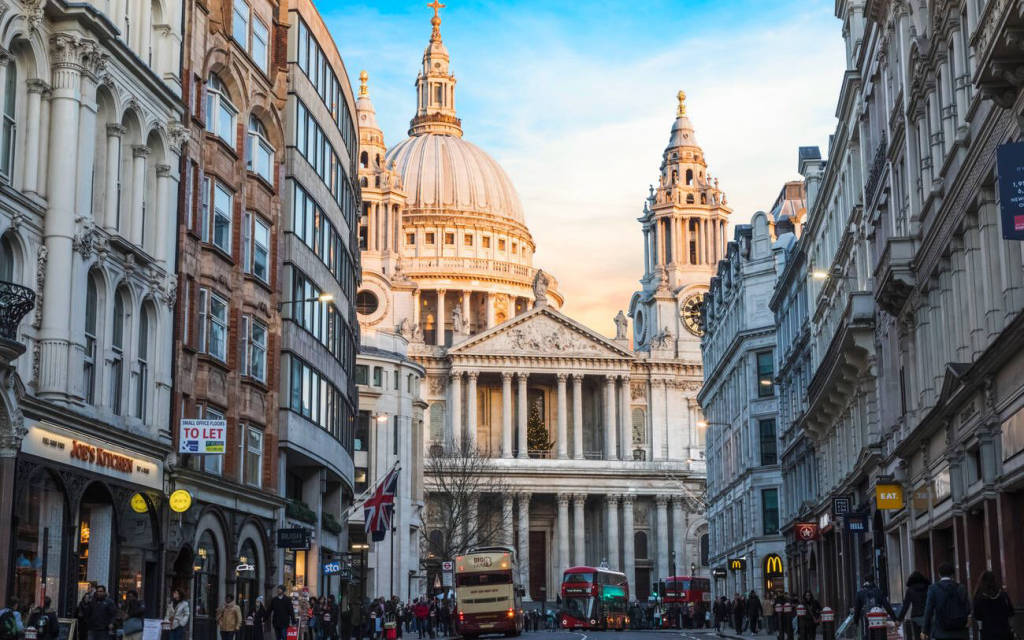Ludgate Hill is traditionally considered one of the three hills in Central London, alongside the other two, Tower Hill and Cornhill Hill. The highest point of the hill is located just north of St Paul's, at 17.6 meters (58 ft) above sea level.
The modern street called Ludgate Hill, formerly a much narrower street called Ludgate Street, runs between St Paul's Cathedral and Ludgate Circus (built 1864), at the time it was became Fleet City.
Paternoster Square, the seat of the London Stock Exchange since 2004, is located on the hill, just north of St Paul's Cathedral. Many lanes on Ludgate Hill were washed away in the mid-1860s to build the Ludgate Hill railway station between Water Lane and New Bridge Street, a station for the London, Chatham and Dover Railways. It was closed to passengers in 1929 and the railway bridge, viaduct between Holborn Viaduc, Blackfriars stations was demolished in 1990 to allow the construction of City Thameslink railway station in a tunnel. This also involves reframing the slope of Ludgate Hill at the junction.
There is a blue plaque near the foot of the hill with this inscription: "In a house near this site was published in 1702 The Daily Courant London's first daily newspaper".
About halfway up Ludgate Hill is the church of St Martin, Ludgate, once joined to Ludgate.
There is a blue plaque near the foot of the hill with this inscription: "In a house near this site was published in 1702 The Daily Courant London's first daily newspaper".
About halfway up Ludgate Hill is the church of St Martin, Ludgate, once joined to Ludgate.
Paternoster Square, the seat of the London Stock Exchange since 2004, is located on the hill, just north of St Paul's Cathedral.
 Register
RegisterSign in Travel Agent
Sign in Supplier
Sign in Affiliate
Sign in Guru



 Ludgate Hill, London, Vương Quốc Anh
Ludgate Hill, London, Vương Quốc Anh